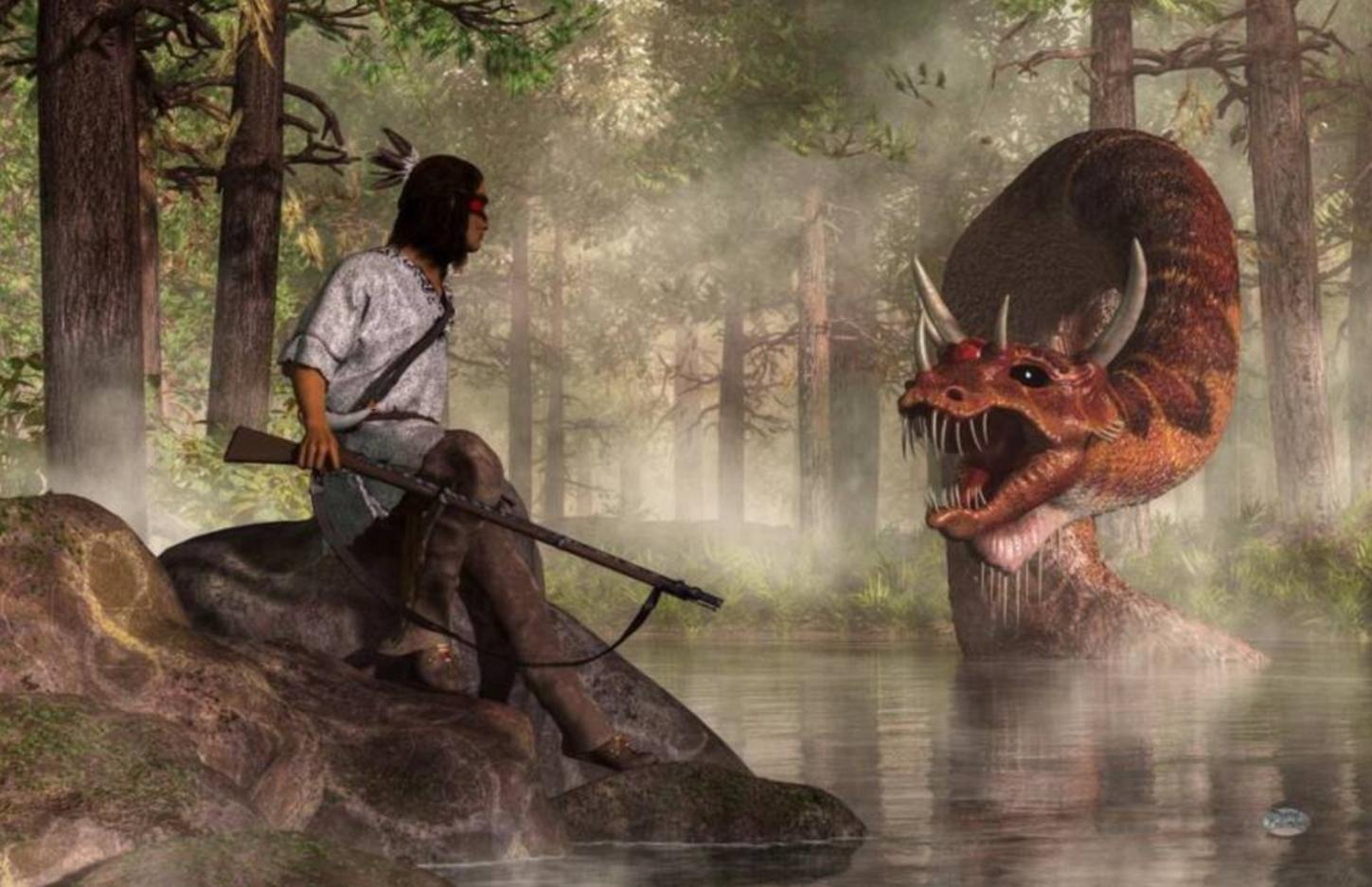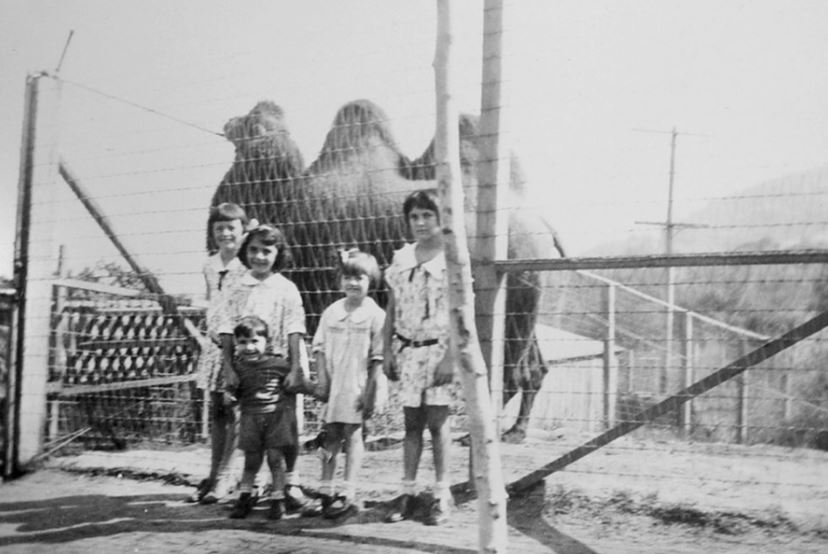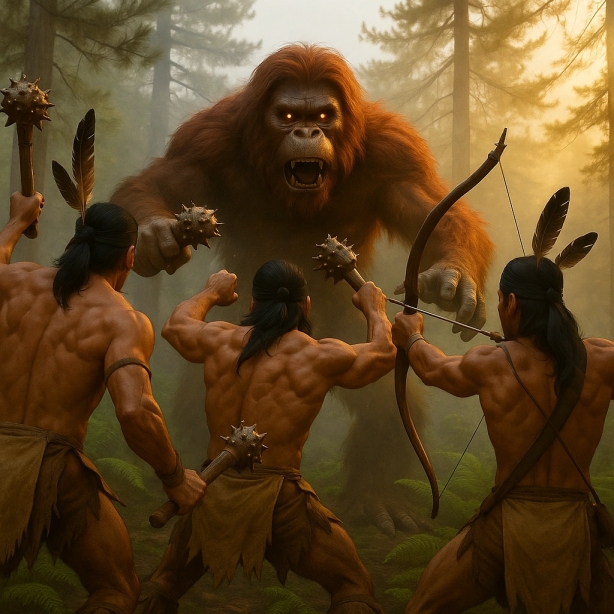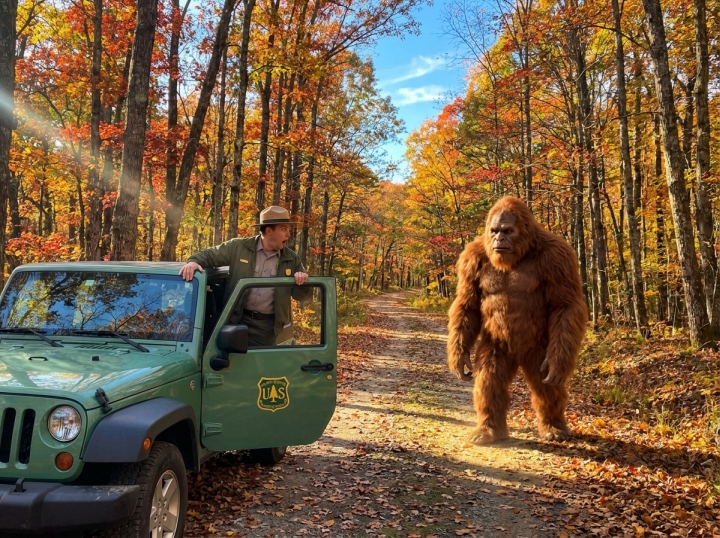
During the pioneer days of the 1800’s of the United States of America, in the states of Texas, New Mexico, Arizona, Nevada, and California; and even in the country of Mexico, there were numerous stories about strange hairy giant beasts roaming around. In at least some of these reports, these creatures were wild, would become dangerously threatening to humans, and in some cases would attack humans. There is even one case on record where a poor young woman in the United States of America was killed by one of these monsters; that true story we shall discuss later on. It is said that for many reported cases of sightings and calamities encountered with these savage animals, a number of such cases did not get officially reported and are lost to history. This matter is especially true considering the vastness of the territory and lack of communication outlets in very small towns and villages of the Old Western Frontiers.
Farmers, explorers, gold prospectors and others have described these terrible beasts of being extremely tall like a grizzly bear and extremely powerful, covered in hair, making a strange howling noise, and leaving huge foot prints behind in the ground that look completely different to any type of animal these people would know of. Horses these people had were oftentimes scared of the sight of these massive beasts, and some people referred to them as devils and demons. Native American Indians had their unfortunate experiences with these beasts and stories of those Indians who have been attacked and even killed by these giant wild animals would be known, back then, by the tribal members much more so than by the white people who lived around the Indians.
We shall now examine a true story of a such a murdering beast called “The Red Ghost of Eagle Creek, Arizona” in the 1880’s. Actually, the killing took place near the Salt River, some eighty miles northwest of Eagle Creek at a place called Quartzsite,a small town in La Paz County, Arizona. The television show “Death Valley Days”, which features true stories of the American Old West, starring Stanley Andrews, also known as “The Old Ranger” as the show’s host and narrator, in 1963, did an episode on the grisly matter entitled “The Red Ghost of Eagle Creek”. The television show told the identity of the red ghost, which the people of the Old West were able to discover scientifically only after the giant hairy beast was killed years and years later, and this article shall too, reveal the mystery, but later on. First the eerie story shall be told.

In 1883, two men left their ranch house, by riding out, early in the morning, to check on their cattle On their way to the cattle, two wives of the men were at the ranch house. One of the wives, about mid-morning, went to a spring to fetch a bucket of water. The other wife was in the house with the children. But, then she heard their dogs barking hysterically and loudly, followed by a piercing scream, which made her run to a window and look out. She saw what she described as “a huge reddish colored beast” ridden by “a devilish-looking creature”. She described the rider of the beast as a skeleton that was attached to the beast by straps. Then she became very frightened, locked her front door, then barricaded herself in the household, and began waiting for the men to return home. When those two men returned, they mentioned that they found the other wife had been trampled to death. Then the next day, the men followed the large footprints of an unknown creature. Cloven footprints were seen that were much larger than those of a horse. Red hair from the beast was found in a bush.
Several days passed by while some prospectors, near Clifton, reported something was tearing through their campground. The men were awakened by the sound of thundering hoofs and very loud screams. Their tent collapsed and the men escaped by clawing their way out just in time to see a gigantic animal run off in the moonlight. Huge cloven footprints were found as well as traces of red hair. A few days later, the uncanny creature was seen by teamsters who camped beside a lonely road and were awakened in the middle of the night by a loud scream. According to the terrified witnesses, who were drivers, the monster was thirty feet high, had a skeleton rider on top, and that it knocked over two freight wagons, and generally raised hell within the camp. The men ran for their lives and took refuse by hiding in the brush. Returning the next day, the men noticed large cloven footprints and strands of red hair were left at the scene.
More stories were told of the hellish beast and its skeleton rider. In one story, the spectral beast carrying the skeleton on its back, killed a grizzly bear, then ate it. In another story, the beast with the dead rider thereon, would gallop at such a high speed that they soon vanished from view. A further story mentions how a cowboy lassoed the beast that carried the skeleton, but the beast avoided capture and almost killed the cowboy. We wonder what injuries the cowboy sustained in the attack. After the beast had a fast loop of rope encircling its head, the monster became angry, turned, and charged the cowboy on his horse. The horse tried to dodge the attack, but to no avail. The horse and rider went down hard, while the creature quickly galloped away in a cloud of dust. Several weeks later, over on the Verde River, a possee of five men who were also prospectors, shot at the beast, missing it, and causing it to run away very fast, but the men managed to shoot the head off the skeleton of which still had some hair and skin thereupon.
Finally, in 1893, a farmer named Mizoo Hastings awoke one morning and quickly discovered the bizarre monstrosity, with the mounted skeleton , eating in his yard, in his garden; the farmer fired at shot from his trusty Wincester firearm thereat it, dropping the beast and the hellish thing died quickly. The demonic creature was soon discovered by a camel that had such tight leather straps that they scarred the beast. Back in 1883, a few months after the young woman’s unfortunate killing by the monster, Cyrus Hamblin, a rancher on the Salt River, rode on a horse to the animal while rounding up cows. Hamblin, a man with a reputation for honesty and integrity recognize the animal as a camel and told people it is a camel. But, people did not believe him, wondering how a camel, that is found in the Middle Eastern countries, would be living freely in America.
The part of the skeleton rider was theorized to be one of two situations that became parts of stories. One idea and most popular is the skeleton belonged to a US soldier that was riding the beast.but the soldier was so much strapped in that the soldier could not get off the camel. The soldier eventually died from dehydration and starvation, which ever came first.A lesser idea is the skeleton is of a man in the hot sunny desert experiencing great thirst, who climbed up on the camel, strapped himself thereupon, and tried to travel on the camel when the camel would go to a place for water.
Unknown to the vast majority of people at the time, at least 70 camels of males and females, so they would breed, were imported from the Middle East; of various Mediterranean ports by the United States of America military government; The Army, on March 3, 1855 to act as pack animals; transport animals of various provisions; supplies; being seen as utterly superior compared to horses, donkeys, and mules that had the job at the time, especially in the deserts of the old American west and southwest. There were even a few Middle Eastern camel trainers that made a profession and life in the United States of America to prepare the camels for use that often involved beating or whipping the beasts into submission. But, eventually, most of the camels failed badly. Generally speaking, they were wild animals who did not want to work and at times were turn against their handlers. During the beginning of US Civil War in 1861, the US Army stopped using camels more and more to the point that camels fell into disuse. After the Civil War, most of the camels were sold at auction; some of the beasts were sold to zoos and circuses, while other camels simply escaped or were even abandoned.
According to reports, the last known living original US Army camels, a female named Topsy, died at Griffith Park in Los Angeles, California in April 1934. Topsy was eighty years of age. But camel sightings in the USA continued onward for decades.



